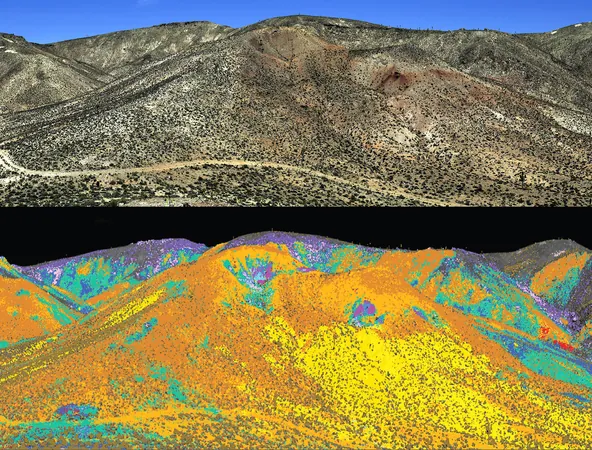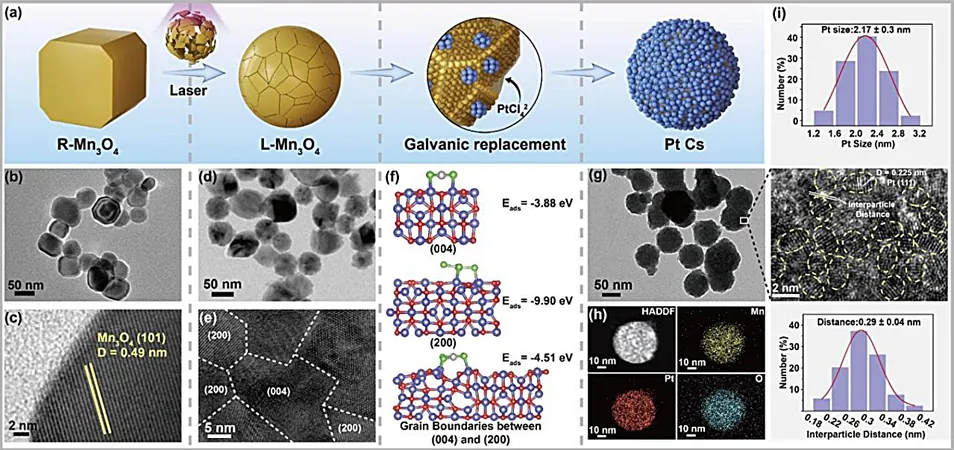
NASA's Skyward Science Labs: Mapping Earth’s Hidden Treasures
2025-07-16
Author: William
When we think of NASA, visions of distant galaxies and the vastness of space come to mind. But now, the space agency is turning its gaze back to Earth, and it’s making monumental strides in uncovering vital minerals hidden beneath the surface.
Revolutionary Mapping Initiative: GEMx
In a groundbreaking endeavor, NASA has joined forces with the U.S. Geological Survey to kick off the Geological Earth Mapping Experiment (GEMx). This campaign employs technologies initially designed for interplanetary exploration to conduct perhaps the largest airborne mineral survey ever held in the United States.
A Mars-like Testbed: Cuprite, Nevada
The barren landscape of Cuprite, Nevada, serves as the perfect test bed for this mission. With its dry, pale terrain reminiscent of the Martian surface, prospectors have flocked to this mineral-rich area for over a century. It's here that NASA fine-tunes its sensors for detecting minerals on extraterrestrial bodies—and now, on our own planet.
Critical Minerals: Our Modern Goldmine
The need for critical minerals like lithium and rare earth elements is more pressing than ever, as they are integral to technology ranging from smartphones to electric cars. The United States currently imports around 50 crucial minerals, and GEMx seeks to locate reliable domestic sources, diminishing this dependency.
Soaring at 60,000 Feet: The Survey Process
Imagine flying at 60,000 feet while equipped with cutting-edge sensors capable of discerning the molecular structure of rocks. NASA's aircraft do just that, capturing light signatures invisible to the naked eye since the campaign's inception in 2023 has already covered over 190,000 square miles—an area comparable to Spain!
A Legacy of Collaboration
The partnership between NASA and the U.S. Geological Survey stretches back to the Apollo era, where geologists created lunar maps for safe landing zones. This collaboration continues to flourish today, laying the groundwork for future lunar missions under NASA’s Artemis program.
Imaging Spectroscopy: The Technology Behind the Magic
At the core of GEMx lies sophisticated imaging spectroscopy—where every molecule acts like a unique fingerprint underlight. NASA's Airborne Visible/Infrared Imaging Spectrometer (AVIRIS) can analyze over 200 wavelengths, making it exceptionally adept at revealing what lies beneath the Earth’s surface.
A Glimpse into the Future: AVIRIS-5
While the original AVIRIS has been the workhorse for over three decades, its successor, AVIRIS-5, is stepping up to the plate. Taking flight in 2025, this state-of-the-art technology promises even greater resolution and data quality, enhancing our ability to uncover Earth’s hidden resources.
What Lies Ahead?
The processed data from these flights will lead to detailed mineral maps that could guide future mining efforts, ultimately reducing the U.S. reliance on foreign imports. For now, the skies over the American West are alive with NASA’s advanced aircraft, edging closer to revealing the treasures hidden just beneath our feet.









 Brasil (PT)
Brasil (PT)
 Canada (EN)
Canada (EN)
 Chile (ES)
Chile (ES)
 Česko (CS)
Česko (CS)
 대한민국 (KO)
대한민국 (KO)
 España (ES)
España (ES)
 France (FR)
France (FR)
 Hong Kong (EN)
Hong Kong (EN)
 Italia (IT)
Italia (IT)
 日本 (JA)
日本 (JA)
 Magyarország (HU)
Magyarország (HU)
 Norge (NO)
Norge (NO)
 Polska (PL)
Polska (PL)
 Schweiz (DE)
Schweiz (DE)
 Singapore (EN)
Singapore (EN)
 Sverige (SV)
Sverige (SV)
 Suomi (FI)
Suomi (FI)
 Türkiye (TR)
Türkiye (TR)
 الإمارات العربية المتحدة (AR)
الإمارات العربية المتحدة (AR)